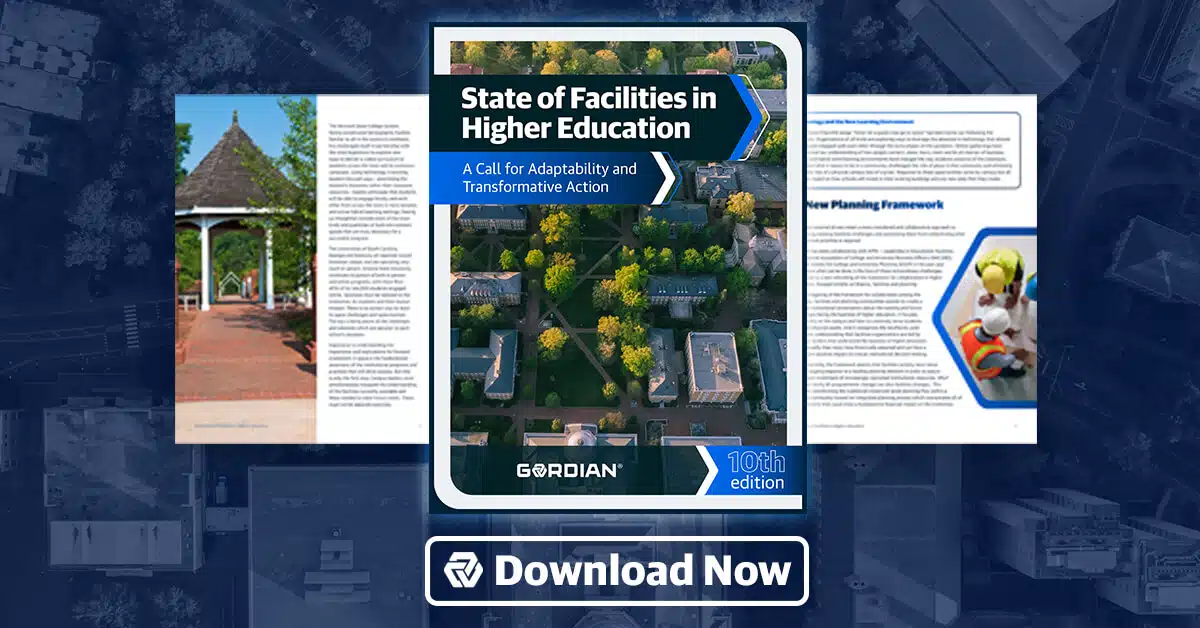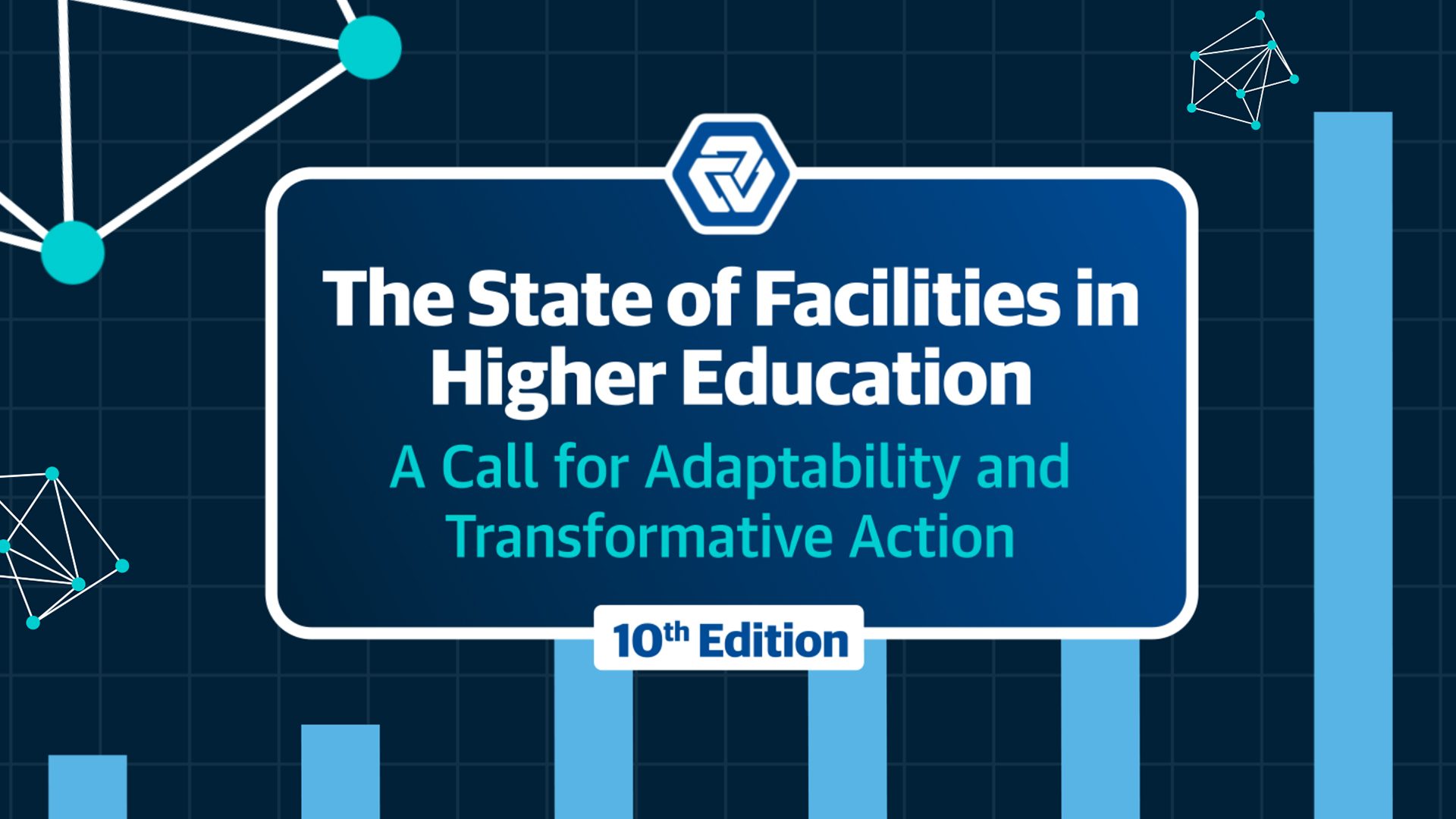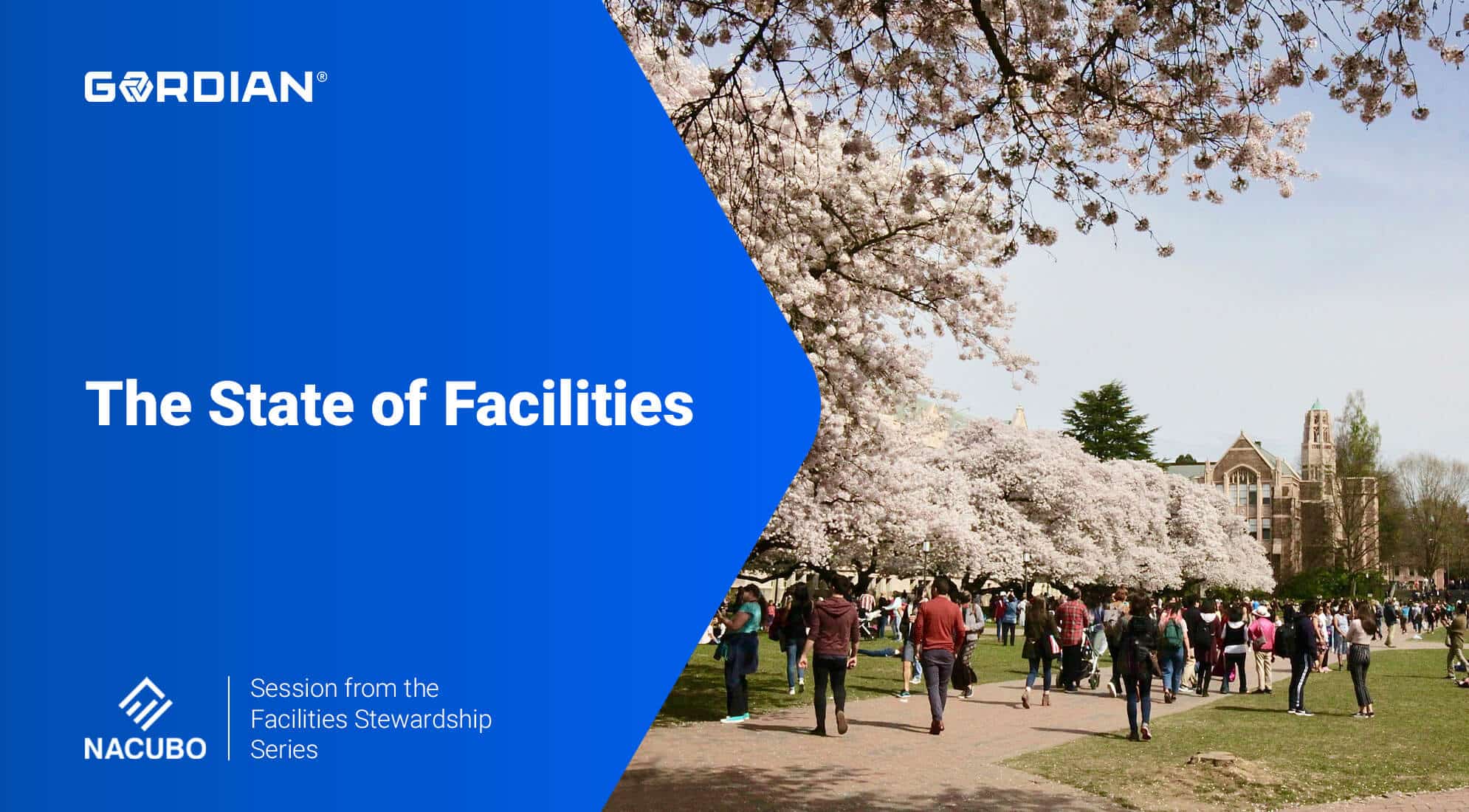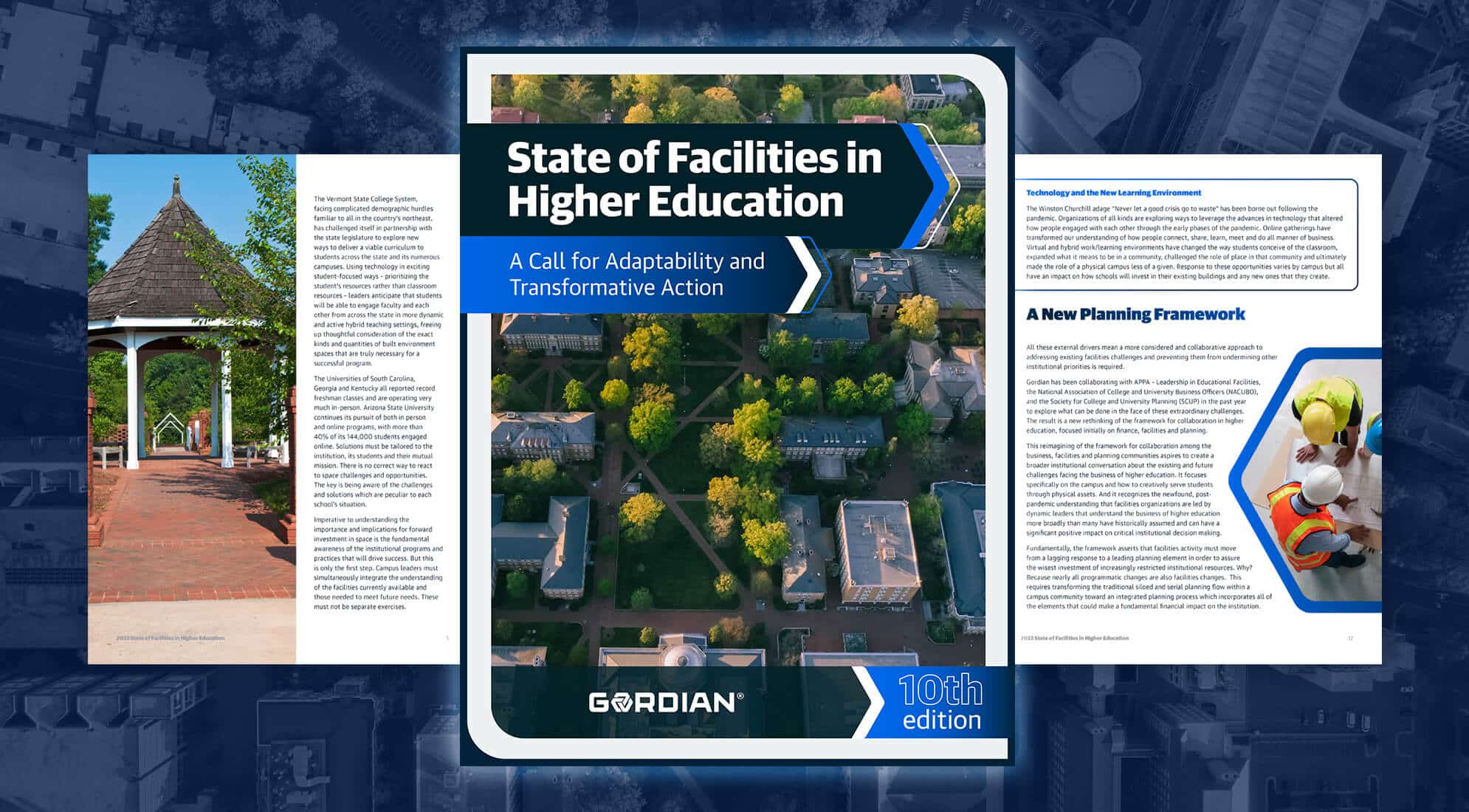Gordian’s “State of Facilities in Higher Education” report has provided vital trends and analysis to campus leaders for ten years. Pete Zuraw, Vice President of Market Strategy and Development, has been the primary author of the report for most of that time, lending the “State of Facilities” his thoughts and insights to serve the broader higher ed community. In this blog post, Pete reflects on the milestone tenth edition of the report, how the landscape of higher education is evolving and how campus leaders are adapting to shifting cultural expectations on and off campus.
Q: Gordian celebrates 10 years of the “State of Facilities in Higher Education” this year. Can you share one of the most surprising trends you’ve seen in the decade of producing this report?
It isn’t clear to me whether persistence is surprising or even considered a trend, but the persistence of the practice to maintain more space than can be affordably operated is a story we have been talking about for some time. After a rash of accidents at the same intersection, people usually put in some form of traffic control. We are seeing the opposite phenomenon. Financial instability is ending the storied histories of more and more colleges, yet campus leaders still persist in believing that their situation is different, so they elect to maintain their current practices regarding space.
Colleges and universities often create narratives around how they are unique in their offerings, and sometimes those narratives are true. But not having enough money to care for your facilities is simple math that will always move conditions in the same direction: downward.
Q: How have you seen the role of higher ed facilities leaders evolve over time? What are some of the key things that facilities leaders today should keep top of mind to be successful stewards of campus resources?
Over thirty-five years working in and around higher education, I have witnessed a remarkable professionalization of facilities leadership. This evolution has afforded these leaders an opportunity to play a bigger and bigger role in setting the direction not just of their offices, but of the whole institution. That influence comes with the added responsibility of speaking the language of the institution, and not just the department. It means communicating not only about the problems they face but also addressing the problems facing those with whom they are speaking. Facilities leaders have become quite skilled in finding common ground from which to act and thinking not only in terms of where the campus is today, but also where it is likely to go in the future. They have clawed their way to a seat at the decision-making table, and they should not give it up.
“Facilities leaders must avoid waiting for direction from others.”
Q: How have you seen the interplay between facilities and finance leaders on campus change? What are some of the key action items for building a strong relationship between facilities and finance offices?
Finance leaders have long struggled with an extraordinary array of responsibilities and the practical challenge of trying to be expert at all of them. It’s becoming more and more common for finance leaders to encounter facilities leaders who are financially savvy, fluent in the language of institutional leadership and able to make thoughtful, institutionally-appropriate decisions. These groups are now more comfortable working together to mitigate risk, enable learning and scholarship, and securing the future of the institution.
Q: Looking ahead to the next decade, what do you think will be different about higher ed facilities management, particularly if the recommendations in this year’s report are heeded? Conversely, what will be the same ten years from now?
Stewardship demands are now so acute, institutional leaders can no longer allow for facilities issues and activities to be reactive, lagging behaviors. If schools are going to avoid being overwhelmed by the challenges their facilities represent, they must bring facilities leaders into the forefront of thinking about the future of the organization. Facilities leaders will be increasingly engaged in helping to realize institutional aspirations from the front of the process. Smart institutions are already moving these people to a more active role. Sadly, the future will still see some institutions continue to fade or disappear as they (or their facilities leaders) continue to ignore the critical work at hand.
Thinking about the next decade of higher education, the striking challenges coming from demographic and population shifts are the obvious threats to the status quo. But depending on the institution, adaptability will be required to navigate changes in financial resources, climate-driven changes to an existing campus site, shifts in the prevalence of remote learning and working, in addition to ongoing campus aging.
Q: Can you share some specific examples of how you’ve seen campus leaders implement recommendations from past state of facilities reports?
At a number of institutions, there have been efforts to take a hard look at campus space and make concerted efforts to keep the existing building inventory in its current state. In some cases, that has meant establishing no-net-new-square-footage policies to force living with the amount of space that is currently available – though not necessarily the exact space if what is currently in place doesn’t meet the needs of the future campus. In some cases, like at the University of Iowa, campus space is being reduced. Older and less viable spaces have been replaced by new, smaller, more efficient spaces designed with the flexibility to effectively meet future campus needs.
Q: Much has been made of the enrollment and demographic headwinds facing higher education today. What are some ways that facilities leaders can help colleges and universities navigate these changes?
Facilities leaders must avoid waiting for direction from others. Strong leaders will understand where their institution sits in the student marketplace and make sure they are positioning the institution to maximize its success. For tuition-driven institutions where enrollment will be a concern, a heavy dose of reality about current campus operations requirements coupled with likely enrollment scenarios must be analyzed now before the stress starts, if it hasn’t already. For institutions where populations are expected to remain stable but the demographic makeup of the student body is likely to shift, careful leaders must apply scrutiny to understand how the campus should evolve to best serve a community with new expectations and needs. For those select schools where things are not projected to change, there is much to learn from the many others who are being forced to innovate by the world outside their doors. It is unclear what the next paradigm shift will be, but as with the pandemic, it may very well arrive suddenly and shock even the most well-positioned institutions.
Q: Gordian has partnered with APPA, SCUP, NACUBO and other thought leaders in developing this year’s report. How has partnering with those organizations enriched our research and reflections?
Our understanding of the higher ed landscape comes from engaging with a wide array of institutions at a deep level. These partnerships enable us to garner tremendous insights. But those insights are just that – ours. Reflecting candidly, our data collection and analysis efforts are rooted in our particular areas of business focus. The perspective we bring has been generously welcomed by our partner associations, and they in turn have brought the insights they are gathering from their thousands of members. The members of these associations are engaging in activities beyond our focus and the associations have also tapped into the thinking of additional colleagues and partners. That breadth of understanding helps inform our insights. It makes our findings and recommendations more securely placed within a paradigm that readers will likely recognize.








